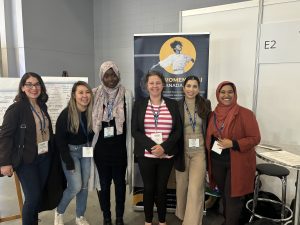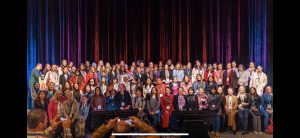A curated OODA triage system for AI Incident Reporting. This tool is available for collaborations. Please contact our Technical Director, François Pelletier, for more information.
Category: 2/ Hard Questions
Hard Questions by Sector
-

Toward a trustworthy and inclusive data governance policy for the use of artificial intelligence in Africa
This article proposes five ideas that the design of data governance policies for the trustworthy use of artificial intelligence (AI) in Africa should consider. The first is for African states to assess their domestic strategic priorities, strengths, and weaknesses. The second is a human-centric approach to data governance, which involves data processing practices that protect the security of personal data and the privacy of data subjects; ensure that personal data are processed in a fair, lawful, and accountable manner; minimize the harmful effect of personal data misuse or abuse on data subjects and other victims; and promote a beneficial, trusted use of personal data. The third is for the data policy to be in alignment with supranational rights-respecting AI standards like the African Charter on Human and Peoples Rights, the AU Convention on Cybersecurity, and Personal Data Protection. The fourth is for states to be critical about the extent to which AI systems can be relied on in certain public sectors or departments. The fifth and final proposition is for the need to prioritize the use of representative and interoperable data and ensure a transparent procurement process for AI systems from abroad where no local options exist.
-

Digitization and Political Participation in the MENA Region: Egypt, Kuwait, and Tunisia
The article highlights the link between digitization and political participation in three Middle Eastern countries: Egypt, Kuwait, and Tunisia. The role of the Internet and social media in political engagement is thoroughly discussed from a historical-comparative perspective. Using micro and macro level data, the study analyzes the usage of new online technologies and online political participation.
The findings provide valuable insights for understanding the intricate nature of online political participation and the paradox between digital engagement and traditional political involvement. Despite the expansion of digital media, traditional political interest and participation has decreased. Egypt and Kuwait demonstrate advanced stages of digitization with widespread Internet access, while Tunisia’s progress is varied. -

(Multi-disciplinary) Teamwork makes the (real) dream work: Pragmatic recommendations from industry for engineering classrooms
Many students choose to major in engineering to join the community of professional engineers and gain exposure to the field through their college experience. However, research suggests that engineering graduates may not be adequately prepared for the workplace due to the complexities of engineering work. Engineering work involves complexity, ambiguity, and contradictions, and developing innovation skills requires analyzing real-world problems that are often ill-defined and multifaceted. Therefore, it is essential for engineering students to have opportunities to work in multi-disciplinary teams to develop their skills in problem-solving and innovation. This emphasis on the need for exposure to multi-disciplinary problem solving holds true not only for undergraduate engineers in training, but also for graduate students focused on engineering education.
This paper draws from experiences of a multi-disciplinary team (including engineers, scientists, UX researchers, Industrial-Organization (I-O) psychologists, economists, and program and product managers) studying talent management in the tech industry, to present lessons learned from leading with science to understand, inform, and improve employee experiences at a large private technology company. Our paper exemplifies how projects in industry leverage multi-disciplinary expertise and presents recommendations for new graduates and engineering professionals. Ultimately, this paper affords an opportunity for educators to expand on examples of how multiple disciplines come together to study engineers in the workforce.
-

Bridging the Gap: Exploring Semiconductors Exposure and Motivation among Multidisciplinary Engineering Students
Several educational initiatives are currently underway to address workforce challenges in the semiconductors industry. Assessing students’ exposure to and motivation for semiconductors-related topics is an essential initial step toward recognizing areas where primary efforts should be concentrated. The primary objective of this study is to assess students’ awareness and motivation concerning semiconductors in the context of a multidisciplinary introduction to electrical engineering course. Through quantitative analysis and the administration of an existing validated survey instrument, we aim to explore students’ exposure to semiconductors-related topics and potential correlations between awareness, motivation, and demographic variables, including gender and class standing. The instrument was administered to a cohort of 255 students enrolled in a multidisciplinary course covering the fundamentals of electrical engineering. Preliminary data indicates that only 9% of the students in this cohort haven taken a class about semiconductors and only 3% have some interest in pursuing a career in the semiconductors field. The results of this analysis hold several significant implications for engineering education and the semiconductor industry. Firstly, the limited exposure to and interest in semiconductors among engineering students suggest the need for curriculum alignment with the demands of the semiconductor industry and interdisciplinary education. By doing so, we empower students from diverse disciplines to contribute to technological advancements, innovation, and problem-solving fostering a more inclusive, diverse, and well-rounded workforce within the semiconductor sector.
-

Decoding the Diversity: A Review of the Indic AI Research Landscape
This review paper provides a comprehensive overview of large language model (LLM) research directions within Indic languages. Indic languages are those spoken in the Indian subcontinent, including India, Pakistan, Bangladesh, Sri Lanka, Nepal, and Bhutan, among others. These languages have a rich cultural and linguistic heritage and are spoken by over 1.5 billion people worldwide. With the tremendous market potential and growing demand for natural language processing (NLP) based applications in diverse languages, generative applications for Indic languages pose unique challenges and opportunities for research. Our paper deep dives into the recent advancements in Indic generative modeling, contributing with a taxonomy of research directions, tabulating 84 recent publications. Research directions surveyed in this paper include LLM development, fine-tuning existing LLMs, development of corpora, benchmarking and evaluation, as well as publications around specific techniques, tools, and applications. We found that researchers across the publications emphasize the challenges associated with limited data availability, lack of standardization, and the peculiar linguistic complexities of Indic languages. This work aims to serve as a valuable resource for researchers and practitioners working in the field of NLP, particularly those focused on Indic languages, and contributes to the development of more accurate and efficient LLM applications for these languages.









